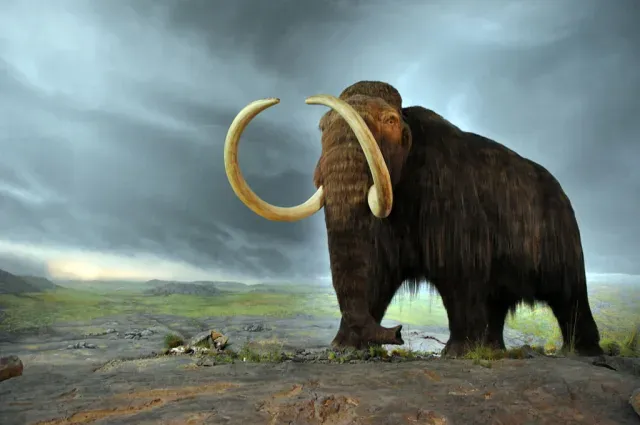
Mammoth Mystery Unraveled: What Really Led to Their Extinction?
2025-04-12
Author: Wei
The Woolly Mammoth’s Final Chapter
Once the majestic giants of the Ice Age tundras, the woolly mammoth roamed vast landscapes, thriving in the cold. However, as the climate warmed and their habitat dwindled, these iconic animals faced an inevitable decline. Their last refuge was Wrangel Island, a remote sanctuary off Siberia, where a small band of mammoths clung to survival.
New Insights from Ancient DNA
A groundbreaking genetic study reveals that the fate of these last mammoths was not a slow fade but a sudden collapse. Dr. Marianne Dehasque, an evolutionary geneticist at Uppsala University, leads the charge with findings published in the journal Cell. Through ancient DNA analysis, her team constructed a detailed genetic timeline, uncovering that the population likely began with only eight individuals.
Against All Odds
Over centuries, this dwindling number swelled to around 200–300—a remarkable feat considering their isolation and the challenges of inbreeding. Surprisingly, instead of an expected genetic decline, the mammoths displayed resilience, naturally eliminating harmful mutations from their gene pool, all while grappling with a limited genetic diversity.
Disease and Disaster: The Final Blow?
While the mammoths skillfully adapted to their Arctic habitat for thousands of years, they were likely unprepared for a sudden disaster. The research suggests that the genetic problems that could doom a population didn’t lead to gradual decline; something catastrophic was at play. Lurking hazards included infectious diseases, which could have thrived due to low immune diversity, or environmental disasters that decimated their food supply.
Human Presence Remains a Mystery
Interestingly, human involvement, often a common factor in extinction, doesn’t seem applicable here. Archaeological evidence places human arrival on the island 400 years post-extinction, leaving scientists speculating about direct interactions.
The Intricacies of Survival and Extinction
Dehasque explains that while low genetic diversity can be detrimental, the stable population over thousands of years shows resilience in the face of adversity. However, each critical season posed risks, particularly for such a small population. The reality remains: the woolly mammoths’ downfall may simply have been a stroke of bad luck.
Lessons for Today’s Conservation Efforts
The woolly mammoth saga highlights the precarious nature of small populations, where genetic stamina can be thwarted by environmental shifts and chance occurrences. This serves as a stark reminder for modern conservationists striving to protect endangered species—it’s a balancing act between survival and vulnerability.
A Timeless Tale of Nature's Dance
Thus, the tale of the woolly mammoth is far more than an ancient history lesson; it encapsulates the delicate interplay of genetics, environment, and sheer luck that continues to shape ecosystems today. As scientists delve deeper into the mysteries of the past, the lessons learned could illuminate our path toward safeguarding the future of at-risk species.




 Brasil (PT)
Brasil (PT)
 Canada (EN)
Canada (EN)
 Chile (ES)
Chile (ES)
 Česko (CS)
Česko (CS)
 대한민국 (KO)
대한민국 (KO)
 España (ES)
España (ES)
 France (FR)
France (FR)
 Hong Kong (EN)
Hong Kong (EN)
 Italia (IT)
Italia (IT)
 日本 (JA)
日本 (JA)
 Magyarország (HU)
Magyarország (HU)
 Norge (NO)
Norge (NO)
 Polska (PL)
Polska (PL)
 Schweiz (DE)
Schweiz (DE)
 Singapore (EN)
Singapore (EN)
 Sverige (SV)
Sverige (SV)
 Suomi (FI)
Suomi (FI)
 Türkiye (TR)
Türkiye (TR)
 الإمارات العربية المتحدة (AR)
الإمارات العربية المتحدة (AR)